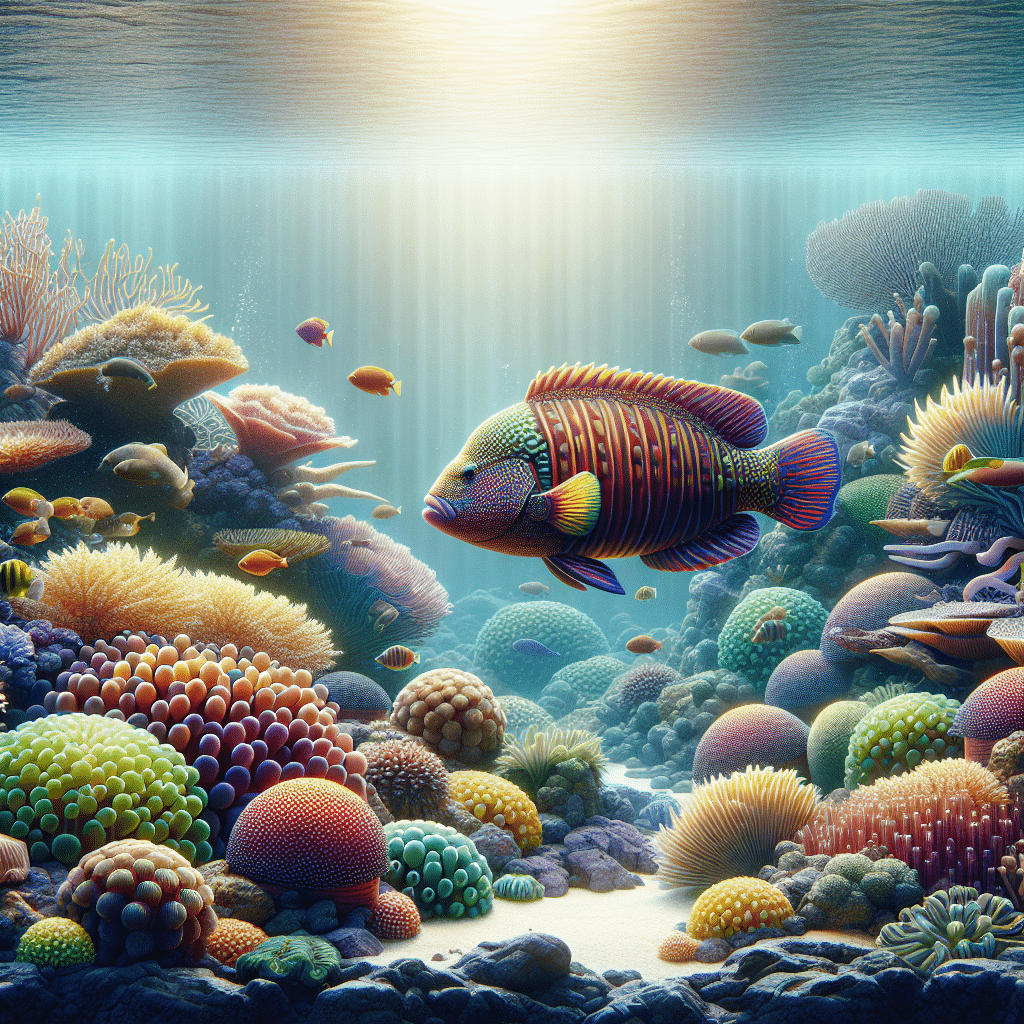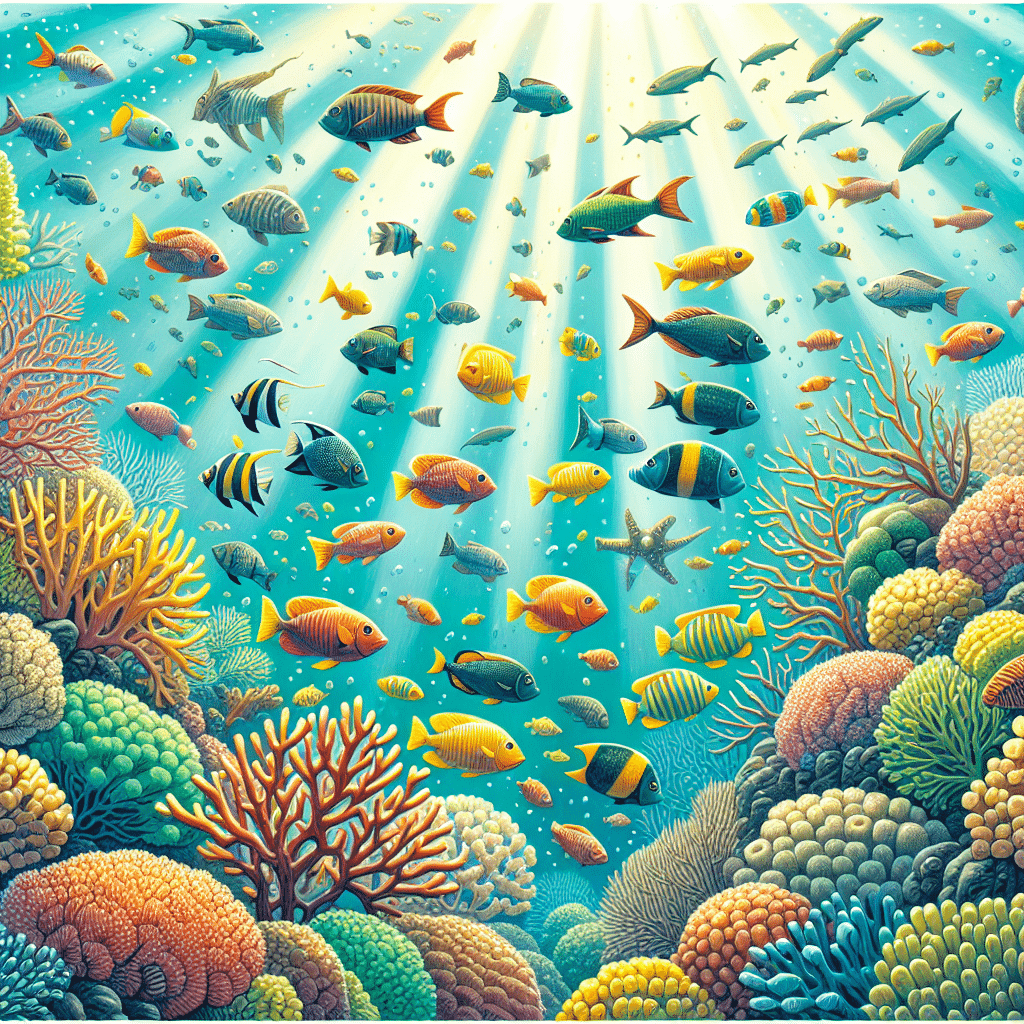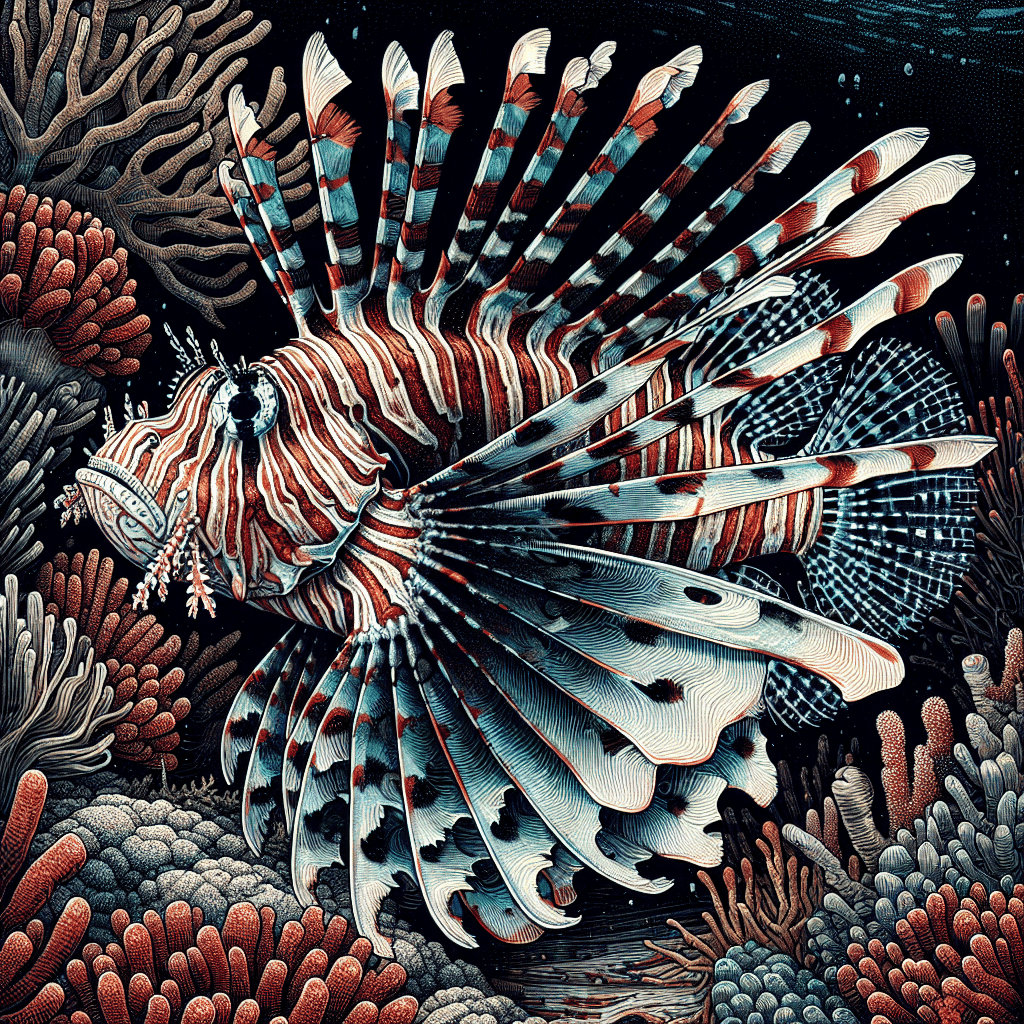The World of Wrasse Fish
Introduction to Wrasse
I find wrasse to be some of the most fascinating fish in the reef tank community. These colorful fish are part of the Labridae family and are known for their vibrant colors and unique behaviors. Wrasses are efficient carnivores, feeding on a wide range of small invertebrates. Some smaller wrasses even follow the feeding trails of larger fish to pick up invertebrates disturbed by their passing. Their diverse species make them a delightful addition to any aquarium setting.
Wrasse Habitat and Behavior
Wrasses primarily inhabit tropical and subtropical waters of the Atlantic, Indian, and Pacific Oceans. Some species can also be found in temperate waters, reaching as far north as Norway. They typically thrive in shallow-water habitats such as coral reefs, rocky shores, tidal pools, and grass beds.
| Habitat Type | Description |
|---|---|
| Coral Reefs | Colorful and diverse ecosystems where wrasses find plenty of food. |
| Rocky Shores | Provides shelter and feeding opportunities. |
| Tidal Pools | Offers a variety of invertebrates for wrasses to feed on. |
| Grass Beds | Serves as a habitat for juvenile wrasses. |
| Open Sand Bottoms | Where some species may forage for food. |
Different species of wrasses have specific habitat preferences. Some may concentrate in large schools at reef fronts or gaps where plankton is abundant. The largest wrasse, the Cheilinus undulatus, can grow up to 2.3 meters and weigh over 150 kg, while most wrasses are smaller, typically below 20 cm, with some even reaching lengths of just 4.5 cm (Animal Diversity Web). Their dynamic behavior and adaptability make them a favorite among fish tank hobbyists.
If you’re considering adding a wrasse to your reef tank, it’s essential to understand their habitat needs and feeding behaviors to ensure they thrive. For more information on marine fish that pair well with wrasses, check out our articles on grouper, tang, and clownfish.
Feeding Wrasse Fish
Feeding wrasse can be a fun and rewarding experience. These fish have lively personalities and active behaviors, which makes understanding their dietary needs essential for their health and happiness.
Optimal Feeding Practices
I’ve found that the best practice for feeding wrasse is to provide small amounts of food throughout the day. This approach helps to satisfy their appetites and supports their energetic lifestyle. It’s important to avoid overfeeding, as this can lead to water quality issues in your tank. Instead, aim to feed them multiple times a day, ensuring they consume their food within a few minutes.
Recommended Foods for Wrasse
When it comes to feeding wrasse, the right choice of food can make all the difference. Here are some of the top recommended foods that I’ve come across for these active fish:
| Food Item | Description |
|---|---|
| Brine Shrimp | A favorite among many wrasse, these small shrimp are nutritious and easy to digest. |
| Mysis Shrimp | High in protein, these are an excellent choice for a well-rounded diet. |
| Krill | Rich in lipids and fatty acids, krill provides essential nutrients. |
| Ocean Plankton | This food is high in protein levels and lipids, making it a nutritious option that wrasse love. |
| Marine Pellet Food | Pelleted foods are quick, convenient, and packed with vitamins, minerals, and trace elements (LiveAquaria). |
Wrasses are efficient carnivores, feeding on a variety of small invertebrates. Some smaller wrasses even follow the feeding trails of larger fish to pick up invertebrates disturbed by their passing. By providing a diverse diet, I’ve noticed that my wrasse thrive and display their natural behaviors more actively.
For more information about marine fish, check out our articles on marine fish and specific species like cleaner wrasse and yellow coris wrasse.
Wrasse Species Diversity
Overview of Wrasse Families
The family of wrasses, known as Labridae, boasts over 600 species spread across 81 genera and divided into 9 subgroups or tribes. This diversity means there is a wrasse for almost every type of reef environment. Most wrasses are small, but some, like the humphead wrasse, can grow impressively large, reaching up to 2.5 m (8.2 ft) in length. In Norwegian waters, five common species include:
| Species Name | Scientific Name |
|---|---|
| Goldsinny Wrasse | Ctenolabrus rupestris |
| Corkwing Wrasse | Symphodus melops |
| Ballan Wrasse | Labrus bergylta |
| Cuckoo Wrasse | Labrus mixtus |
| Rock Cook Wrasse | Centrolabrus exoletus |
| Scale-Rayed Wrasse | Acantholabrus palloni |
These species play important roles in their ecosystems, often serving as cleaner fish in salmon farms.
Unique Characteristics of Wrasse
Wrasses are easily identifiable by their unique features. They have pointed snouts, prominent canine teeth, a protractile mouth, cycloid scales, and a continuous dorsal fin that lacks a notch between its soft and spiny parts. One of the most notable species, the humphead wrasse (Cheilinus undulatus), is the largest member of the Labridae family. Males can reach up to 2 meters in length and weigh as much as 180 kg, while females generally stay under one meter. They are primarily found in the Indo-Pacific region, including areas around the east coast of Africa and the Red Sea (Animalia).
The color variations among wrasses are remarkable. Their hues can range from vibrant blues and greens to softer pastels, making them a favorite among aquarium enthusiasts. This diversity in appearance and behavior adds a unique charm to any reef tank setup.
For more information on marine fish and how to care for them in your aquarium, check out the marine fish section.
Threats to Wrasse Populations
Overfishing of Wrasse
One of the biggest threats to wrasse populations, especially the humphead wrasse, is overfishing. This fish is highly sought after in the live reef fish trade, particularly in Southeast Asia, where it’s considered a luxury food item (World Wildlife Fund). Due to this demand, the humphead wrasse (Cheilinus undulatus) has seen its populations drastically decline. For instance, in Sabah, Malaysia, the population has plummeted by 99.91% since 1974. Between 1995 and 2003, there was a staggering 98% reduction in catch numbers (ScienceDirect).
Here’s a table summarizing the decline of the humphead wrasse:
| Location | Population Decline (%) | Time Frame |
|---|---|---|
| Sabah, Malaysia | 99.91 | Since 1974 |
| Sabah, Malaysia | 98 | 1995 – 2003 |
The humphead wrasse is now categorized as endangered by the International Union for the Conservation of Nature (IUCN), primarily due to the live reef food fish trade (ScienceDirect). The recovery of this species is threatened by illegal, unregulated, and unreported (IUU) fishing activities, habitat destruction, and gaps in public knowledge about their conservation needs.
Conservation Efforts for Wrasse
Efforts are being made to protect wrasse populations, particularly the humphead wrasse. The federal Department of Fisheries Malaysia, Sabah, is leading the charge in enforcing fisheries-related activities and is the CITES management authority for this species. Conservation strategies include prohibiting destructive fishing practices, banning trawling in coastal habitats, and stopping the sale of fish caught through harmful methods.
Despite these efforts, the situation remains precarious. It’s essential to address the various threats to the humphead wrasse and other wrasse species to ensure their survival. For anyone passionate about reef tank fish, understanding these challenges and supporting conservation initiatives can make a significant difference. If you’re interested in other marine species, check out articles on marine fish or other fascinating creatures like lionfish and clownfish.
The Humphead Wrasse
Humphead Wrasse Overview
The humphead wrasse (Cheilinus undulatus) is an impressive coral reef fish that can grow over six feet long. One of its most distinctive features is the prominent bulge on its forehead. These fish are not just large; they can live for over 30 years, making them a fascinating addition to any reef tank. Humphead wrasses roam through coral reefs, searching for hard-shelled prey such as mollusks, starfish, and crustaceans.
Because of their size and unique diet, it’s crucial to create an environment that mimics their natural habitat. Providing plenty of hiding spots and a varied diet will help keep these magnificent fish healthy.
Conservation Challenges
Unfortunately, humphead wrasse populations face significant threats. They are highly vulnerable to overfishing due to their status as a luxury food item in the live reef fish trade, particularly across Southeast Asia (World Wildlife Fund). This demand has led to severe depletion of their populations, which are now categorized as endangered by the International Union for the Conservation of Nature (IUCN).
The World Wildlife Fund (WWF) urges local governments in the Coral Triangle to take action against the trade and consumption of humphead wrasse. The illegal fishing methods used by poachers not only threaten the fish but also endanger the coral reefs and the overall food security of the region. Additionally, humphead wrasses play a vital role in maintaining coral reef health by preying on crown-of-thorn starfish, which are known to damage reefs.
It’s essential for hobbyists to be aware of these challenges when considering adding a humphead wrasse to their aquarium. Supporting conservation efforts and ensuring that any fish purchased are sourced sustainably can help in the fight against overfishing and habitat destruction.
Wrasse in Coral Reef Ecosystems
Role of Wrasse in Ecosystems
I find wrasses to be fascinating creatures that play a vital role in coral reef ecosystems. These fish are some of the most abundant and noticeable inhabitants of tropical reefs worldwide. They belong to the second largest family of marine fishes, with around 500 species spread across approximately 60 genera (Animal Diversity Web).
One of the most interesting aspects of wrasses is their behavior. Cleaner wrasses, for instance, engage in a unique cleaning symbiosis with larger fish. They groom these fish by consuming parasites, which helps maintain the health of their hosts. Studies show that when cleaner wrasses were removed from a reef in Australia, the total number of fish species halved, and their overall populations dropped by three-quarters (Wikipedia). This clearly illustrates how crucial they are for the overall health of reef ecosystems.
Additionally, some wrasses, like the humphead wrasse, are known to eat crown-of-thorn starfish, which can be harmful to coral reefs when their populations explode. By controlling these starfish, wrasses contribute to maintaining the balance of coral reef health (World Wildlife Fund).
Significance of Wrasse Conservation
Conserving wrasses is important not only for their species but also for the overall health of coral reef ecosystems. Given their significant roles, protecting wrasses can have a positive impact on various other species that share their habitats. For example, the humphead wrasse is considered an umbrella species, meaning that efforts to conserve it can help protect many other marine life forms that depend on the same environments.
In my experience as a fish tank and reef tank hobbyist, understanding the interconnectedness of these species has helped me appreciate the importance of conservation efforts. Maintaining healthy wrasse populations ensures that the ecosystems they inhabit remain balanced and vibrant. It’s essential to consider conservation initiatives that support these amazing fish and their habitats, not just for their sake but for the entire marine ecosystem.
Overall, recognizing the role of wrasses in coral reefs underscores the necessity for continued conservation efforts. By protecting these vital species, we can help ensure a thriving underwater world for generations to come. If you’re interested in learning more about marine fish, check out our article on marine fish.
Wrasse in Salmon Farming
Wrasse Use in Salmon Farms
In my experience with reef tanks, I’ve learned that wrasse play a significant role in salmon farming, particularly in Norway. Since 1988, targeted fisheries for wrasse have been established to support this industry. The use of wrasse in Norwegian salmon farms skyrocketed from about 1,000 fish in 1988 to around 3.5 million by 1997. By 2012, approximately 14 million wrasses were utilized to combat salmon lice, a common issue in salmon farming.
The primary species used in these farms include corkwing, goldsinny, and ballan wrasse. These cleaner-fish are essential because they consume harmful parasites from the salmon, promoting healthier fish stocks and reducing the need for chemical treatments.
| Year | Wrasse Used in Salmon Farms (Millions) |
|---|---|
| 1988 | 1 |
| 1997 | 3.5 |
| 2010 | Estimated doubling from 2009 |
| 2012 | 14 |
Impact of Wrasse on Salmon Population
The impact of wrasse on salmon populations is quite remarkable. As they feed on salmon lice, they help maintain the overall health of the salmon. This natural method of pest control can lead to better growth rates and higher survival of the salmon, ultimately benefiting the aquaculture industry.
However, while the use of wrasse in salmon farming is beneficial, it’s crucial to monitor their populations to avoid overfishing. Studies have shown that local wrasse populations are showing signs of depletion, particularly along the Norwegian Skagerrak coast. Catches per unit effort for goldsinny wrasse were found to be 33–65% higher in marine protected areas, indicating that these areas provide more sustainable environments for wrasse.
It’s important for fish tank and reef tank hobbyists to be aware of these dynamics. Sustainable practices in wrasse fishing and conservation efforts are essential to ensure that both wrasse and salmon populations remain healthy. By understanding the role of wrasse, we can appreciate their importance not just in our own aquariums, but also in larger ecosystems and industries.
For more information on marine fish, feel free to explore our section on marine fish.
Wrasses in Marine Protected Areas
Wrasse Depletion Concerns
I’ve noticed that there are growing concerns about the depletion of wrasse populations, especially in certain regions. Limited natural movement and low dispersion rates for juvenile wrasse lead to many distinct small local populations. This makes it tough to estimate the size of each population, and the effects of fishing can vary greatly. Some local populations may be overfished, while others nearby might be virtually unaffected.
Recent studies along the Norwegian Skagerrak coast showed that local wrasse populations are indeed showing signs of depletion. For instance, catches per unit effort of goldsinny wrasse were found to be 33–65% higher in marine protected areas. These findings suggest that protected areas can provide a sanctuary for wrasse and help maintain their populations (ICES Journal of Marine Science).
Importance of Marine Protected Areas
Marine protected areas (MPAs) play a crucial role in conserving wrasse populations and their habitats. Wrasse are key intermediate predators in coastal ecosystems, particularly in the algal belt. They help manage mesoherbivores and reduce fouling organisms, maintaining the balance within their environment.
By providing a safe space free from fishing pressures, MPAs can help wrasse populations recover and thrive. In these protected environments, wrasse can repopulate and contribute to the ecological health of coastal areas. It’s clear that protecting these habitats is essential not just for wrasse, but for the entire marine ecosystem.
In summary, as I dive deeper into wrasse care and their role in reef tanks, recognizing the importance of marine protected areas can guide my efforts in supporting their conservation and ensuring sustainable practices within my hobby.



